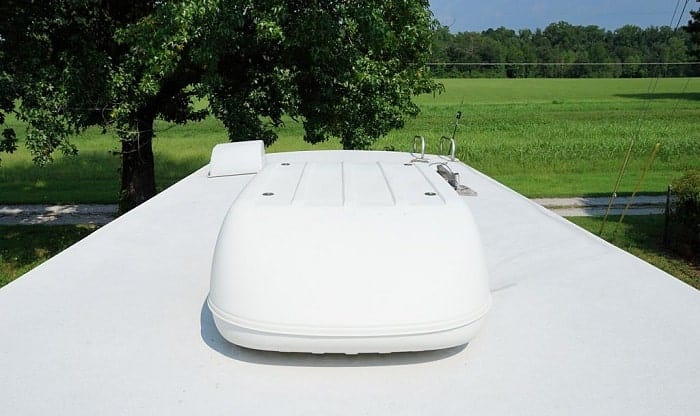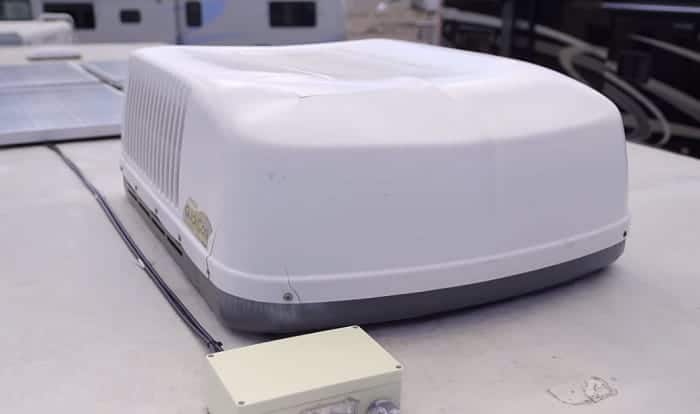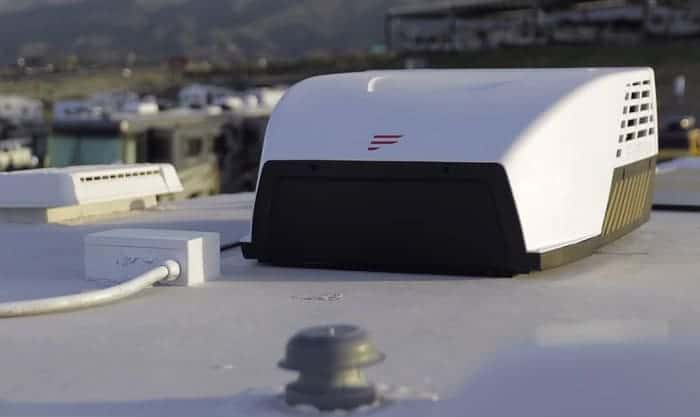You are out in summer and planning to enjoy your vacation to the fullest. To help you in this venture, your RV is your utmost companion. With the scorching summer rays hitting you hard, to make the ride pleasurable, you thought of turning on the AC. But, how cold should an RV Air Conditioner get?
Honestly speaking, it is hard to pinpoint a particular temperature as it varies on the interior temperature of the RV. Typically, most of the RV AC units will have a temperature conversion increment of not more than 20 degrees. If your RV is hot like 80 degrees, your AC can drop the temperature down to just 20 degrees, which is 60 degrees maximum and not more than that.
Table of Contents
AC Unit’s Coolness Depends on Intake Temperature
The AC unit’s temperature will only drop if the intake temperature lowers a bit more. It is because AC units are a bit limited in RV, mainly on account of the intake system. So, in place of producing air, which you can chill as per your need, the unit processes the cabin’s heat to a lower degree. So, there will be increments based on the temperature, which is sucked into intake. It affects the coolness of the AC air.
Why Does the RV AC Unit not Keep RV Cool
If you compare the AC unit of your RV to that of your home, then think again! The RV air condition units are not as efficient as those you use in residential or commercial areas. It is because most RVs are not properly insulated like your average home. In any place with higher temperature and humidity, AC units might find it problematic to keep up and top off ducted AC units. Remember that ducted designs are less efficient than the non-ducted AC conditioners in RV to keep the interior cool.
Generally speaking, the RV air conditioners will keep the RV 20 degrees F cooler than the outside temperature. So, if the RV is standing right under direct sunlight on any hot summer day, the AC unit will find it hard to keep up. To improve the current cooling effect of RV’s AC unit, it is important to keep the vehicle in a shaded campsite.
Adding another second RV AC unit or buying a larger unit might help in cooling down RV more, but it will be an expensive endeavor. In its place, there are some cost-effective tips that you must know about to resolve this issue well.
Improving the Cooling Efficiency of Your RV
You can improve the current cooling efficiency of your RV through some regular maintenance on the AC unit. I have listed out some steps for your reference.
- You can start off by cleaning the AC filters. Dirty filters can easily reduce your RV’s current cooling capacity and efficiency of the entire unit. The filters of the roof ACs are located inside the vehicle, right under the air distribution bezel on the unit.
- Most of these conditioner filters are crafted of washable materials. So, you can easily wash them off in warm water carefully and thoroughly. Remember to dry them out before replacing them. In case the filter is torn or fails to clean up properly, it is time to replace it. Remember to check and clean filters at least once every month.
- When you have successfully removed the filter, you will find the evaporator coils in RV AC. Take your flashlight and check out those coils. If you find dust or debris accumulation, use a soft bristle vacuum cleaner to remove the foreign particles from the coil.
- Once you are comfortable on your RV’s roof, you should start cleaning the outside portions of condenser coils. For that, you have to remove the shroud on AC, which is held on tightly with multiple screws. While you are on the RV’s roof, remember to get a model number of the AC units for determining its BTU output.
- After removing the shroud, use the power of compressed air to blow out debris, which might have gotten into the condenser coil. Always remember to blow the air from inside out. This process needs to take place at least once in every year.
After completing these routine maintenance steps, run your RV AC unit once again to see if that helps in improving the cooling issues. Even after performing the maintenance, if you aren’t satisfied with the results, make sure to take it to a certified RV technician. He can check if the problem lies with the AC unit or the ducts.
Taking Control of the Hot Temperature
As the cooling air limitation has been restricted to 20 degrees lower than the outside temperature, you must learn about some ways to control hot temperatures. In case it is plugged into an outdoor outlet or around 30 to 50 amps, or has enough power from a generator, you can leave the AC unit on during the daytime when you are out.
It helps to give the camper enough time to cool down and maintain that comfortable temperature to experience in the evening. This method will be using less energy in place of just blasting the unit for a few hours. It might cause some serious stress on the unit and on you as well.
For that extra bit of chilled air, you can try turning the AC on during nighttime and not only during the day. It helps the unit circulate cold air within your RV at a consistent rate and save some extra energy.
All in all, the unit will not have to work pretty hard to defect the sun anymore. You might feel a bit chilled with the AC on the whole night, especially while waking up in the morning, but here the idea is to make it low and slow to create a perfect cabin temperature throughout the rest of the day.
Utilize the Fan of your RV AC unit
There are some ways to utilize the fans of your RV’s AC unit. Make sure to turn the fan on its highest setting and the temperature to the coldest one for a while. Then leave the window or door of the RV open. It helps to give your surrounding air a proper kickstart. Avoid leaving it on the entire time as that ends up burning a lot of energy.
When you feel the interior air of your cabin cooling down, turn the fan and temperature down. If you fail to do so, it might freeze the coils inside the unit and won’t make it work well. Even the air that comes out, might feel warm.
When you finally get back to your RV after performing this trick, the interior atmosphere will be comfortable and cool.
Why Close the Door to Keep the Heat in
In winter, you plan to keep the doors close to keep heat inside the house. On the other hand, you always keep the door open during summer months to keep everything inside cool. But things work a bit differently in RV AC units during summer months. Opening any window will not help the RV to remain cool for a long time.
It is already mentioned to open the door or window and keep AC on full blast for little time. However, soon enough, the temperature will start leveling out and won’t get any colder. It is because the unit will be pulling hot air outside and not what is left in the cabin. Therefore, you might experience hot weather inside.
So always get to keep your windows and doors closed. Another interesting tip is to cover up windows, which are letting sunrays in. For that, you can pull down the shades or put reflective sun shades in windows. Now, for the sun roof right at the top, some outlet shops have little reflective pillows. You can stuff those to keep the sun out.
Conclusion
From the information already mentioned, you should realize that to maintain a cool temperature inside your RV, you can’t rely on the AC only. Note down some pointers too.
- Remember to keep a clean filter and evaporator coils to ensure that your AC runs properly for a long time.
- Try utilizing the power of the RV AC unit’s fan to the fullest to keep the interior cool.
- Don’t forget to close the windows and doors, to maintain a proper temperature inside the RV.

Hi, I am Tom Hank, an RV-er since 2014. Back then, I started without much help. As you can imagine, the struggles are endless. But now, you do not have to begin your adventures knowing next to nothing about RV lives.




